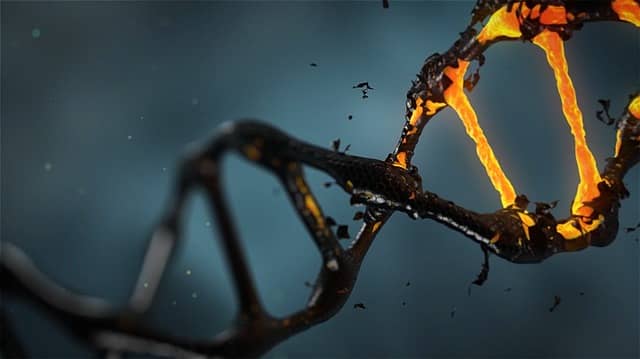Written by Henry Chang

When the police record criminal profiles on a blacklist, they know the identities of major threats. Single-cell organisms called bacteria are created with the same type of defense mechanism. Its full name is Clustered Regularly-Interspaced Short Palindromic Repeats (CRISPR). Scientists have recently figured out how to use this process as an efficient and precise means of changing the genetic makeup of humans. Each person is composed of an assortment of genes and all of them together make an individual’s genome. Using CRISPR, researchers who know the location of harmful genes can now target them for treatment in the case of genetic defects and for ongoing research.
CRISPR is a bacteria’s security system. Once an intruder successfully infiltrates and causes harm in the human body, bacteria take a piece of it for future identification. The intruder represents a virus. When the same intruder returns, the policeman, a Cas9 protein, removes it before further damage can take place. Over time, more intruders are recorded, resulting in stronger security. Researchers around the world who realized how to take advantage of this security system were inspired to discover the possibilities that CRISPR could bring.
In modern human society, when a civilian gives the policeman the identity of threats, damage can be minimized. Similarly, by using CRISPR scientists provide the location of harmful genes on the genome, those promoting genetic defects and diseases, so that the Cas9 protein can revise them. As described in a review from leading scientific journal Nature, the same approach has been tested previously using zinc finger nucleases (ZFN) and transcription activator-like effector nucleases (TALEN) [1]. ZFN bind to building blocks of DNA and have proven effective in recognizing many locations. Unfortunately, this technique takes a lot of time and does not always work. On the other hand, TALEN binds one DNA building block, making it easier to provide target locations but at the cost of accuracy. CRISPR is also imperfect. The Cas9 protein has not been shown to work on packaged human DNA as the other methods have, so further research is still needed before any human applications can be made.
Despite this setback, CRISPR is still strongly desired for its utility in many fields of research. Those who study cancer now artificially induce mutations in cancer-causing genes to better understand the impact of each. Another Nature article describes how scientists in Tokyo, Japan were interested in studying the extent to which mutations in intestinal stem cell signaling contribute to human colorectal carcinogenesis [2]. They did so by growing human intestine epithelial cells and, using CRISPR, introducing mutations by design; the results provided a basis for consequent research. This process represents a direct means of studying the effect of harmful mutations on organisms.
Today, CRISPR is certainly the bee’s knees in scientific research. It is simply astounding to believe that gene editing advanced by this technique can treat prevalent genetic disorders, such as cystic fibrosis and Down syndrome. If the capitalistic commercialization of CRISPR-Cas9 patents can be smoothly resolved and the ethical boundaries can be delineated, humanity will obtain one of its most powerful tools yet.
References:
1. Dana Carroll. 2012. “A CRISPR Approach to Gene Editing.” Molecular Therapy. Volume: 20.
2. Matano M,Date S, Shimokawa M, Takano A, et al. 2015. “Modeling colorectal cancer using CRISPR-Cas9-mediated engineering of human intestinal organoids.” Nature Medicine. Volume: 21.